
On Nutrition: Why You Should Add These 6 Mushrooms To Your Diet
Date: 06/09/2023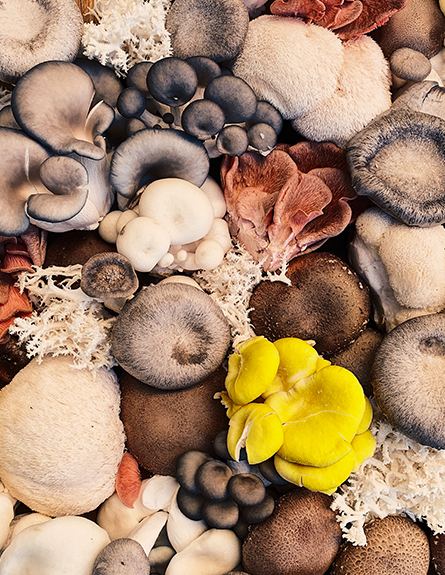
When you’re out walking in the pristine gardens of nature, how often do you look down at your feet? You may be surprised at how much incredible nutrition can be hiding under the next leaf or decomposing log. That’s right! I’m talking about mushrooms!
Mushrooms are becoming a super hot topic in the world of health as we continue to discover more and more about their nutritional and healing effects. And although I’m not recommending you go out and eat the first mushrooms you see (leave that to the pros!), there are a ton of great ways to incorporate mushrooms into your diet.
To date, there are hundreds of mushrooms that have been found to have immense healing properties. Some of them are even native to North America, like the Hen of the Woods, which I’ll talk about in a moment. But which kinds do what, and where can we get them? What’s the best way to incorporate them into the foods we eat every day? More importantly…if you’re the kind of person who doesn’t like the taste of mushrooms, how can you still get the nutritional benefits without the taste?
These are just a few of the questions I want to answer today as we ‘dig’ into the fruits of the great mycelium networks that cover all geographies and landscapes in our world. And although I won’t get too dorky on you about the power of mushrooms (there are a ton of documentaries that do a better job than I could, such as “The Fantastic World of Fungi” on Netflix), I do want to share with you the top seven mushrooms I’m most familiar with, as well as the health benefits of each. We’ll learn a little bit about where they’re found, the best ways to consume them, and where you can get some for yourself locally, or online.
Before we begin however, I want to highlight the importance of safety if you don’t plan to use store bought mushrooms, and instead want to try your hand at foraging. There are entire communities and educational institutions dedicated to the study and selection of mushrooms, and even the pros sometimes pick the wrong mushroom–which can have deadly effects. That’s why right now, I want to encourage you to trust the professionals, and use supplements or whole food mushrooms you can get from most health food stores.
However, if you begin to feel the boosting effects of the mushrooms, and want to learn more about how to grow or pick your own, then I do think you would enjoy doing a little more research into mycology–which is the study of mushrooms and mushroom types. These communities are very welcoming, and love to teach new learners about the mushrooms they can gather (and eat!) in their local area. If that’s you, here are a few articles to bookmark for future reference:
- Top Ten Edible Mushroom Species in North America
- Mushroom Hunting: A Helpful Guide for Beginners
- A Guide to Mushroom Foraging for Beginners
- Mushroom Growing Kits: Complete Guide, Reviews, and Top Picks
- Mushroom Foraging: 11 Easy Types to Find
Now, let’s take a look at the top mushrooms I look for when I’m out doing my shopping, and how they can improve our personal ecosystems for immune system boosts, faster healing, and increased energy! As of writing, this list includes: (1) Maitake, also known as Hen of the Woods, (2) Shiitake, (3) Lions Mane, (4) Chanterelle, (5) Turkey Tail, (6) Chaga, and (7) Reishi.
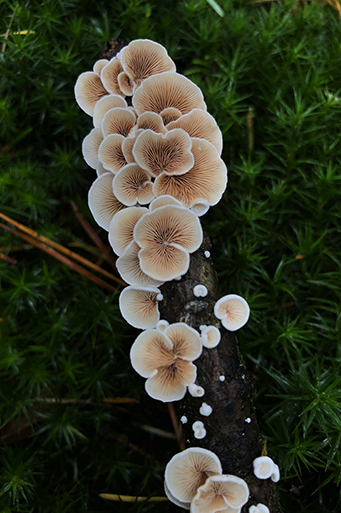
Recommended Dose: 2 g or about one teaspoon of mushroom powder.
Flavor Profile: Chicken or Wild Game Hen
Maitake mushrooms (or Hen of the Woods) are an ultra-common fungal species used to supplement nutrition and wellness therapy. They are a type of edible mushroom often found at the base of large deciduous trees, such as oak, maple, persimmons, and elm. According to popular research on Maitake, these fantastic mushrooms can grow up to 100 pounds!
From a purely nutritional perspective, this mushroom has a high protein and carbohydrate content, while being relatively low in fat when compared to other health-optimizing mushrooms. They’re also a rich source of the vitamins, minerals, and amino acids you may be trying to get through other methods. For example, they’re high in vitamin B6 and folate, and contain important minerals sucha s iron, zinc, and magnesium.
According to this source on the subject, these mushrooms contain choline, which is a nutrient that boosts the transmission of serotonin and dopamine. Plus, because they are so highly sought-after by chefs for their incredible taste, this is one of the edible mushrooms you’ll easily be able to incorporate into your cooking.
Did You Know? The recommended daily dose for maitake mushrooms (2g) contains 40 mg of immune-supporting carbohydrates.
Interestingly the health benefits of this mushroom do relate to the molecular makeup of it’s bioactive carb and protein strands, which have been identified in the literature as having an almost endless list of health benefits; these include hypertension control, anti-tumor activity, and antiviral or antibacterial effects. For Maitake mushrooms, there is also a whole host of research-backed evidence toward fighting cancer.
Indeed, one of the compounds in Maitake extract (D-fraction) has been proven to prevent and even kill cancer cells. It can reduce the ability for cancer cells to spread, and block tumor cell growth. This study even found that, when individuals with stage 2 to stage 4 cancer types were given D-fraction, they experienced cancer regression and significant symptom improvements.
As current research does continue to make advances in studying this mushroom, the positive discoveries seem endless per Maitake’s health benefits. These include:
- Improvements to blood glucose and blood sugar levels to help manage weight gain, particularly weight gain associated with diabetes;
- Anti-diabetic effects, and reductions in the overall risk of developing diabetes.
- High levels of antioxidants like vitamins C, E, and D
- Boosts in female fertility, particularly for those who suffer with polycystic ovarian syndrome. One study showed maitake extract helped 77% of sterile female participants ovulate.
- Reduced cholesterol levels, caused by the release of cholesterol and sugar into the digestive tract for proper processing.
- Known efficacy for reducing symptoms of infections, such as coughing, congestion, or sneezing, as well as other immune system boosts.
- Impacts on inflammation in the intestines due to bowel inflammation from ulcers and even Crohn’s.
Amazing, right?
Well, according to this article, the incredible power of the Maitake shown above is quite often associated with the regulation of our gut health—which has been proven to determine our health outcomes. That’s because the carbohydrate and protein compounds in Maitake are a great food source for good gut bacteria, like probiotics and prebiotics.
What’s most interesting about the health effects of this mushroom, however, are the mental health benefits being studied. For example, Maitake mushrooms contain a high quantity of ergothioneine, a chemical which – when low – has been related to the onset of diseases like Alzheimer’s, dementia, and Parkinson’s, among others. It is also connected to our ability to make and remember memories, and return to balance under stress and duress!
Although there are many products available for consumption through your local natural health food store, or online, products that are currently available in a more pharmaceutical capacity focus on immunotherapy and as a complementary therapy for patients undergoing chemo or radiation, but most studies emphasize that human trials are still needed to confirm these effects. Rest assured, you can always call up your favorite chef and see if they know where to get them fresh for your next fancy meal!
2. Shiitake
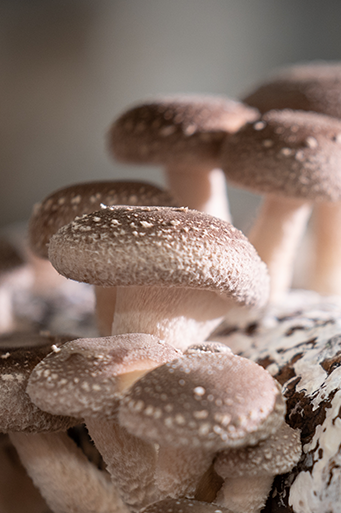
Recommended Dose: Average of three to eight mushrooms per day to avoid potential side effects.
Flavor Profile: Umami flavor (savory or meaty), great for cooking when fresh.
As their namesake indicates, the Shiitake mushroom is native to Japan and Asia, though there are many farms cropping up in North America that grow Shiitake. You can buy these mushrooms in fresh and dried form, or as an additive to your daily meals. Whatever path you take for your Shiitake’s, know that this mushroom has an incredibly high dietary fiber content, as well as high levels of iron, calcium, and magnesium. Unlike the edible mushrooms on this list that grow directly on the soil below trees, you’ll find these mushrooms growing on the sides of fallen hardwood trees–so keep your eye out!
According to mushroom foodies in the know, Shiitake mushrooms make a great substitute for red meat and contain many of the same amino acids. That said, they’re great as as supplement that you can add as a powder to tea or smoothies, or to your next batch of bone broth. You’re also likely to get a good boost of minerals you wouldn’t otherwise find in regular foods, such as copper, B5, and selenium. They are great absorbers of vitamin D as well, so when you’re shopping around (or growing your own) find out if they’ve been grown under UV light.
Before we get more into the health benefits of Shiitake, I want to quickly mention that, with this mushroom, the stems (or ‘stipes’) of the mushroom are just as important as the caps, if not more so. That’s because they contain higher carbohydrate, vitamin, mineral, and amino acid counts than the caps. If you have to choose between the two (both are best), I recommend the stems–they’re just as tasty.
You may already recognize the name Shiitake since they have for a long time been used in Chinese medicine to boost health and improve circulation. My initial research showed that a popular area of research for Shiitake is its protective capacity against cancer and inflammation, while more niche research on the subject digs deeper into the oral health benefits and antimicrobial activity. In fact, when compared to regular mouthwash, Shiitake extracts performed just as well at preventing and eliminating gingivitis as the leading brands–without all the toxic effects associated with alcohol-heavy and synthetic mouthwashes.
As I got deeper into my reading though, it turns out that Shiitake is just as much of a powerhouse as Maitake in terms of its antioxidant, anticancer, antifungal, and antiviral effects. For instance, the zinc content of Shiitake mushrooms have been associated with immune-boosting effects that activate the immune system and prevent age-related disease–be careful though. If you have an auto-immune disease like mine, these mushrooms can cause symptoms to flare up if over-consumed.
Here are just a few more health benefits that have been linked to Shiitake intake, thanks to the powerhouse of nutrients contained in this little ground-fruit! Shiitake mushrooms…
- Fight cancer cells. Through immune system activation, these mushrooms have been known to produce cancer fighting effects in animal trials, particularly leukemia and stomach cancer.
- Support heart health. Studies with animals have proven that Shitake mushrooms reduce blood pressure and cholesterol.
- Decrease inflammation. This includes inflammation symptom reductions for joint pain, depression, weight gain, anxiety, and gut problems.
Unlike some of the other mushrooms on this list, Shiitake over-consumption has been linked to increased white blood cell counts and higher sun sensitivity. Others have seen itchy rashes from eating cooked shiitakes, so make sure you consult your health professional before adding Shiitakes to your diet.
3. Lions mane
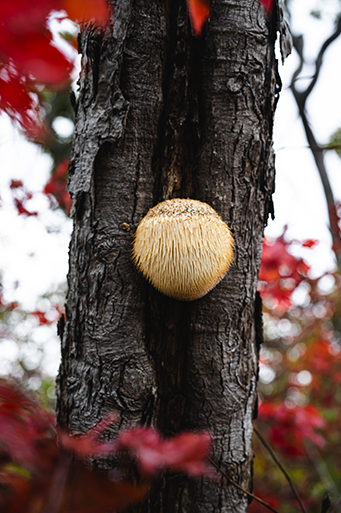
Recommended Dose: Minimum daily doses from 250 mg to 750 mg have been proven effective, whereas a maximum of 3000 mg is noted in the literature. Take with food and water, consistently, daily.
Flavor Profile: Umami-type flavor, described as ‘lobster-like’
While most of us are used to mushrooms that grow on the ground or at the base of trees, Lion’s Mane mushrooms are rare in that they grow higher up in trees, probably so fewer animals can get their paws on them! They are native to North America, Europe, and Asia, though European sightings are becoming scarce.
Like the other mushrooms on this list, Lion’s Mane is super high in protein, and averages about 22 g per 100 g. It contains a whole host of essential amino acids, comparable to that of egg protein. This is great news for those of you who are on a plant-based diet, or who want to supplement their protein intake with something other than beef, lamb, or chicken! Plus you can eat them in pretty much any form: raw, cooked, in tea, or dried–though sources say you may not feel effects for a few weeks. Whatever your style, foodies recommend adding them to your morning tea and coffee if you’re doing powdered form, or a smoothie or soup stock. Just don’t exceed the 3 g minimum (3000 mg) per day. Just make sure to test a small amount first–as with all mushrooms, some people have been known to be allergic.
Now, while this mushroom is tasty and nutritious to us, it is the medicinal benefits of Lion’s Mane that are causing a big stir in the health community world-wide. Not only have they been proven to impact metabolism and immune system regulation, but are also showing significance in the areas of dementia and Alzheimer’s prevention. These effects are largely attributed to the capacity of Lion’s Mane to promote brain cell health and growth, as well as nerve cell health and growth. These impacts then lead into the mushrooms influence on depression and anxiety reduction, whereby one study showed proof of serotonin, norepinephrine, and dopamine restoration after trials and testing.
Here are just a few other dietary and health benefits that arise with Lion’s Mane intake:
- Protects against gastric ulcers and the digestive tract by triggering gut functions and immune modulation.
- Reduces heart disease risk by improving metabolism and inhibiting cholesterol oxidization and weight gain.
- Prevents liver, pancreas, and kidney damage through blood sugar regulation.
- Induces cell death, with promising results for cancer cell targeting to hinder the formation of tumors and metastases.
Of note with Lion’s Mane, outside of its immune-boosting potential and the other positive correlations above, is that it has been associated with antimicrobial activity that actually targets antibiotic-resistant bacteria. This is a huge boon for the medical community, as prevalent viruses and infection-causing agents continue to proliferate and mutate to resist new forms of treatment. Exciting stuff!
4. Chanterelle
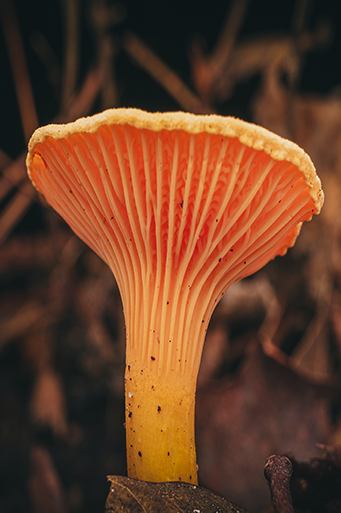
Recommended Dose: No recommended dose has been established because medicinal use is still in trial phases.
Flavor Profile: Peppery, with a somewhat fruity (apricot) profile. Come in white, yellow, and orange.
Chanterelle’s are a mushroom that seem fancy just by their name, and they also serve a great purpose to the trees beneath which they grow: in fact, some sources say they create a symbiotic relationship with surrounding root systems, meaning there is a fungal dance going on beneath our feet wherever we see one growing. If you are seeking out these mushrooms, guides recommend looking from July to September, along oak, maple, poplar, and birch treelines.
Adding to their ‘luxury’, these mushrooms are known for their pairings (like a fine wine) with butter, cream, meat, or oil–although some foods already come with Chanterelle additives, so keep your eyes out. Otherwise, cooks will include them in all kinds of cooking, especially in heavy, savory soups, sauces, or souffles. More often than not, this is the way health-conscious foodies will incorporate them into their diet, as their flavor comes out most when cooked. They are rarely eaten raw, but can be consumed in their dried form with supplements or capsules.
All that said, these fancy mushrooms pack a punch when it comes to nutritional and antioxidant content. That is, Chanterelles are rich in vitamin D, and just half a cup can provide up to 100% of your daily intake. They are rich sources of many other vitamins and minerals you need on your day to day, including vitamins A, E, C, and B1, B2, and B6, as well as potassium, copper, and iron.
But that’s not all; just like the other edible mushrooms in this short list, the compounds found in Chanterelle mushrooms have myriad health benefits that are currently the focus of study in a lot of modern medical trials. For example, it has been proven that Chanterelles…
- Support bone health via antiinflammatory agents and support for calcium absorption.
- Have a copper content that supports energy production, brain health, and iron metabolization. Also decreases the body’s susceptibility to bacterial infection.
- Neutralize harmful free radicals to protect against chronic disease and reduce inflammation symptoms.
- May slow the growth of certain types of cancer cells.
- Promote faster wound healing, including complete repair of the skin layer, more collagen production, and anti-inflammatory effects.
If you do intend to start adding Chanterelle mushrooms to your diet – whether for the high fiber content, or the other associated benefits listed above – note that the fresh Chanterelle’s will go off quickly. This article says that, once harvested, nutritional quality, biological activity, and other physical properties change. Best cook them as fresh as you can get!
5. Turkey Tail
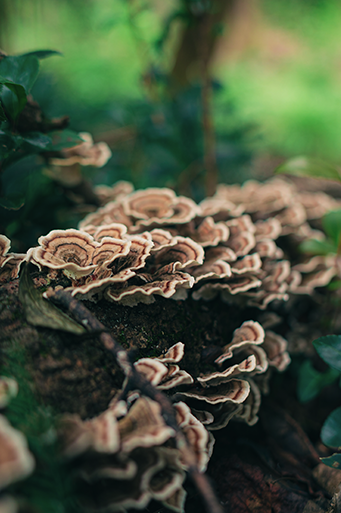
Recommended Dose: Maximum of 2000 mg daily.
Flavor Profile: Mild to bitter, without strong ‘mushroom’ flavor.
According to popular opinion, more research has been done on the Turkey Tail mushroom than any other on this list, and perhaps of all the mushrooms there are! Some of this mushroom’s more than 120 strains have even been tested through human clinical trials, whereas others are still in the animal trial stage. That is why I was so excited to include this mushroom on the list, because the research on their causal health benefits seem endless! Truly, I think if you choose any one mushroom to start incorporating into your diet from this list, it should be this one. Plus, you can include this mushroom into your diet in any form, though most often these days people are consuming it in powders, drink mixes, supplements, or in premade or homemade broths.
So, what is so special about the Turkey Tail mushroom? Well for starters, it has the most promising effects in the face of critical, chronic illnesses like cancer. This review of current literature for instance reports that, with Turkey Tail mushroom extracts and additives in the mix, it’s supplementation can improve: (a) patient quality of life following chemo, and (b) five to ten year survival rates in cancer patients, especially those with stomach or colorectal cancers. Researchers here importantly note that there were no “published side effects or interactions with drugs reported”, with indications that they are safe in combination with other pharmaceutical therapies.
That’s not all. A group of studies on the subject (one, two, three, four, five, six) nicely breaks down the three-pronged effect that Turkey Tail mushrooms have on cancer. First of all, these mushrooms create an immune response – essentially ‘waking up’ our immune function, helping our cancer-fighting cells remain active. Next it helps regulate the threshold of your immune system so that it works continuously to fight cancer cells without ‘burnout’ or down-regulation–particularly in breast cancer and leukemia. Finally it protects against the depletion of red and white blood cells that commonly occur during chemo and radiation treatments.
While even more studies continue to confirm the ‘anti-melanoma’ activity of Turkey Tail mushroom, other studies have focused on other amazing health benefits, such as its effects on diabetes, immune support, help with osteoporosis, and more. For example…
- This study has between antihyperglycemic effects and a sampled strain of Turkey Tail mushroom, particularly the alleviation of oxidative stress on our cells. Translation? Turkey tail may support the prevention and maintenance of type 2 diabetes!
- This study investigates (and advocates) for the immune support capacity of Turkey Tail mushrooms in breast cancer progression.
- This study (and this one!) showcases improvements in good gut bacteria (prebiotics and probiotics) with the ingestion of Turkey Tail mushroom.
- These two studies (one, two) reveal the anti-viral activity of Turkey Tail, which has shown success against influenza A, herpes simplex, and even HPV.
- This study indicates that Turkey Tail mushrooms help prevent bone density loss, and even increase bone density.
Keep in mind, the majority of available research is still in animal trials, so there is a long way to go to confirming these outcomes in humans–yet the results are still highly promising. It’s honestly hard to pick and choose which articles to share with you, and their findings, since there are so many positive results in the direction of Turkey Tail mushroom. (Again, I really would suggest watching “Fantastic World of Fungi” on Netflix. It’s incredible what mushrooms can do!).
What I will say, is that with the advent of research still in progress in relation to how Turkey Tail mushrooms can support lymph node health, prevent DNA damage to white blood cells, and even improve athletic performance – and with Chinese Medicine’s history of knowledge surrounding its effects on toxins, energy, organ strength, liver lung and spleen function, coughs and breathing difficulties, and even join pain – I continue to emphasize this mushroom as being most important to our health–especially those of us with autoimmune illnesses or diseases.
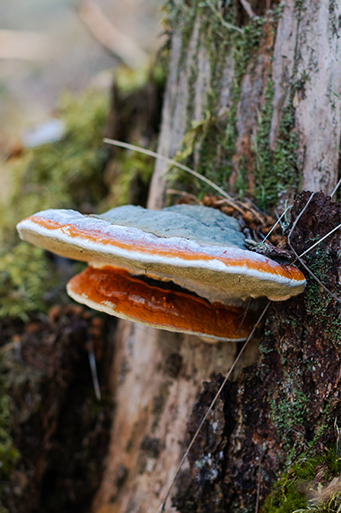
Recommended Dose: 2000 mg daily. If you’re new to the mushroom, begin with a lower dose.
Flavor Profile: Harsh, intense flavor.
Chaga mushroom, perhaps the most fun mushroom to say, gets its name from the Russian word for ‘mushroom’ – which is czaga. It’s also found more primarily in that region, because of how it thrives in colder climates. The mushroom itself can be found growing on certain trees such as alder, beech, and oak.
Because this mushroom is fairly intense in flavor – making it a little less palatable than the other mushrooms listed here – it is often used in teas or beverages that can coat or minimize the flavor, while still allowing for all the health benefits. In fact, some sources say that these medicinal properties are enhanced when taken with either warm or cold water. That’s why I think it is even becoming popular in the production of superfood drinks! For example, ChugaChaga Inc. has a bottle of tea drinks available in some parts of the US (they’re based in NYC), while Four Sigmatics has a whole host of drink mixes and coffee blends that support immune health.
From a nutritional perspective, these mushrooms are very high in fiber and provide a powerful dose of antioxidants when consumed. Unlike the other mushrooms on this list however, these mushrooms come with a bit of a warning label. For example, this article specifies that Chaga can inhibit certain nutrients from being absorbed, shouldn’t be taken with blood thinners or diabetic medications, nor should it be used if you have a kidney condition.
That said, this mushroom made it here for a reason: it also has a whole host of medicinal benefits beyond its nutritional value. Of most interest right now are the mushroom’s capacity as a natural antiviral to supplement drugs prescribed against SARS-CoV-2, how it plays a role in preventing liver damage, and the ways in which it can be used to target improved gut bacteria.
There is also a lot of exciting research being done on how Chaga may affect tumors by inhibiting tumor growth, and could also be key to improving the efficacy of cancer drugs and therapies. Like the others, this mushroom includes a diversity of other medicinal effects, including immune support, and positive impacts on breast cancer cell lines. It has promise where diabetes and blood sugar regulation are concerned, particularly since this type of mushroom is natural and non-toxic. It has even been shown to disrupt the regular course of lung, ovarian, and cervical cancer cell growth, while creating pathways for the prevention of DNA damage from UVB exposure.
Otherwise, most of the beneficial properties of the Chaga mushroom align with those of the other mushrooms on this list. For example it has been shown to:
- Reduce long-term inflammation and deplete harmful bacteria to prevent infection and conditions like heart disease or rheumatoid arthritis.
- Increase ‘good’ cholesterol levels while depleting bad cholesterol.
- Reduce tumor sizes by up to 60% to slow cancer growth.
- Contain high levels of antioxidants to prevent cell damage from roaming free radicals.
- Decrease overall blood sugar levels by up to 31% in just three weeks.
As I mentioned before, Turkey Tail mushrooms are one of the only edible mushrooms to be tested on humans in a clinical environment. That means Chaga mushrooms have only been through animal trials as yet. That means breastfeeding or pregnant persons should avoid Chaga consumption for safety reasons.
Mushrooms and More Mushrooms for Your Health
Learn something you didn’t know about mushrooms? I know going over this research again has made me realize just how critical an impact these discoveries could have on the healthcare system if seriously adopted in mainstream medicine. Until then, naturopaths and practitioners of Chinese medicine are providing an avenue to mushroom use in a safe, and practiced discipline.
Yet I will emphasize again that I am not recommending you start these mushrooms without doing more research and consulting a medical professional or naturopath who can properly moderate and measure up on the effects. Your story could potentially help the future of this line of medicine, after all! However you choose to proceed, just remember to keep in mind the potential side effects, communicate about the other medications you may be on, and most importantly: stay safe! No need to become your own science experiment when there are so many resources out there available to help keep you (and me) informed about how we can introduce mushrooms into our diet regimen for immune-boosting, amino-acid providing, support!
Until next time,
All of my Love,
![]()
Lena
SUBSCRIBE
Get the latest updates, sneak peeks and more.
 Back To All Posts
Back To All Posts Previous Post
Previous Post

